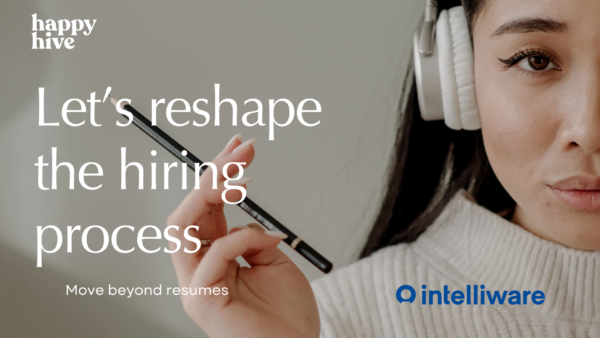Agentic AI moves work at machine speed, so leaders must bring the guardrails. A pilot in claims automation, a trading assistant, or a maintenance planner can take actions that ripple through core systems in seconds. A single unclear rule can trigger costly loops, data misuse, or missed audit trails. Strong governance turns that risk into measured, auditable outcomes your board, auditors, and customers can live with.
Regulated sectors carry strict rules on privacy, safety, and fairness, and those rules do not pause for pilots. CIOs and CTOs need simple structures that scale across teams and tools. The focus is to decide what an agent may do, how it proves its choices, and when humans step in. This approach keeps the work grounded in outcomes, compliance, and trust.
“Agentic AI moves work at machine speed, so leaders must bring the guardrails.”

What Leaders Need From Agentic AI Governance Best Practices
Leaders ask for clarity, not complexity. You want to know who is responsible, what the system is allowed to do, and how the evidence will stand up in reviews. You also want simple ways to tune risk appetite without rewriting code or pausing critical services. That means policies expressed as code, clear roles, and controls tied to measurable outcomes.
The second ask is proof. Audit-ready logs, repeatable evaluations, and traceable data flows are the floor. Teams need to demonstrate that privacy rules, fairness checks, and safety limits are applied the same way across platforms and vendors. That level of consistency keeps surprises small and recoveries quick.

10 Practices For Governing Agentic AI Systems Leaders Should Apply
Agentic AI systems need structure that fits how they act, learn, and interact with other systems. AI governance frameworks that focus on roles, evidence, and controls give teams a clear path to scale. The focus should stay on outcomes, safety, and traceability across the full life cycle. Clear ground rules make it easier to expand use cases without growing risk.
1) Define An AI Governance Framework With Roles And Accountability
Start with a working model that ties every agent to named owners and reviewers. Assign a product owner, a responsible AI lead, a security architect, a data steward, and an incident commander. Write a RACI that shows who approves prompts, tools, data sources, and release gates. Keep the model small, explicit, and visible to anyone who touches the system.
Turn that model into repeatable AI governance frameworks for your portfolio. Use templates for risk assessments, impact statements, and approval records so the evidence looks the same across teams. Require sign-off for capability changes and high‑impact use cases with clear acceptance criteria. Store all artefacts in a system of record so compliance checks are quick and consistent.
2) Set Autonomy Levels And Approved Actions For Agentic Systems
Define autonomy in plain language that any stakeholder can understand. Levels might start at “observe,” move to “draft,” then “act with approval,” and finally “act with review.” Attach each level to transaction caps, tool access, and data scopes. Tie promotions across levels to evaluation results and error budgets.
List approved actions as verbs with guardrails. For example: “create ticket,” “update record,” “send message,” or “submit order,” each with limits on frequency and value. Block or require approval for actions that cross systems of record or touch money, safety, or sensitive data. Keep these rules in policy-as-code so engineers can test them like any other requirement.
3) Apply Strict Data Governance With Privacy, Lineage, And Quality Checks
Treat data classification and minimization as defaults, not add‑ons. Mask or tokenise sensitive fields at the edge, pass only what the agent needs, and log the reason for access. Define retention for prompts, outputs, and tool responses so privacy rules are respected without breaking traceability. Validate inputs and outputs with schema checks to avoid garbage-in patterns that later hide defects.
Record lineage for every dataset and artefact an agent uses. Store dataset cards with purpose, limitations, and contacts so reviews move faster. Track quality metrics like freshness, completeness, and known bias flags next to the data itself. When data shifts, trigger re-evaluation of impacted functions before the agent resumes high-impact work.
4) Map Regulations To Controls And Evidence Across The AI Life Cycle
Translate regulatory clauses into specific controls your teams can implement. Link access limits, privacy rules, fairness checks, and safety restrictions to code, tests, and logs. For each control, define the evidence that proves it is present and working. Keep this mapping stable across vendors so switching models or tools does not break compliance.
Bake the mapping into daily workflows. Pull control checks into CI, release gates, and change requests so compliance does not rely on memory. Use labels for control IDs in logs and tickets so auditors can trace issues to requirements. When rules change, update the control library once and distribute the change through versioned policies.
5) Build Policy Guardrails And Access Controls For Prompts, Tools, And Integrations
Treat prompts like code. Use versioned templates, required variables, and output filters to reduce prompt injection and data leakage. Keep secrets out of prompt text and restrict which tools an agent can call under each autonomy level. Apply least-privilege access with short‑lived tokens and clear expiry.
Guard the seams between systems. Require explicit allow‑lists for APIs and enforce schema validation on both sides. Log every tool call with purpose, parameters, and outcome so investigations are quick and factual. When risk rises, drop autonomy levels automatically instead of shutting down service.
6) Require Human Oversight With Clear Escalation, Review, And Stop Rules
Define when and how a person must review an agent’s work. Use risk-based rules such as value thresholds, safety implications, or customer impact to trigger checks. Assign meaningful reviewers who can approve, correct, or stop the action. Keep response-time targets so oversight does not stall important work.
Make the stop path simple and well tested. Provide a visible stop switch for each agent and a policy that explains when to use it. When a stop happens, cut access to risky tools first and keep read‑only functions available where safe. After the pause, run an after‑action review before restoring autonomy.
“Structured governance keeps agents fast and safe without forcing teams to slow down.”
7) Run Safety Evaluations And Red Teaming Before And After Release
Test agents against misuse, drift, and common failure modes before they touch production. Build suites that check prompt injection, data exfiltration, biased outputs, and unsafe actions. Score the results, document fixes, and set a bar for release that matches your risk appetite. Repeat the tests at each promotion in your deployment pipeline.
Keep pressure on after release. Run scheduled red teaming with fresh attack patterns and adversarial prompts. Track regression on key safety metrics and block releases that fall below the baseline. Rotate people from security, risk, and product into these exercises to strengthen both coverage and culture.
8) Monitor And Log Prompts, Actions, Fairness, And Drift With Alerts
Observability is the core of safe scaling. Capture prompts, tool calls, outputs, and approvals with timestamps, user IDs, and autonomy level. Add structured fields for rationale, evidence links, and control IDs. Encrypt sensitive logs and set retention that balances privacy with audit needs.
Watch the signals that matter. Alert on spikes in refusals, overrides, PII exposure attempts, and off‑policy actions. Track fairness metrics over time and compare to agreed thresholds. When drift or bias appears, lower autonomy, refresh data, or re‑run evaluations before allowing higher‑risk actions.
9) Manage Versions, Releases, And Incidents With Rollbacks And Playbooks
Give every agent, model, prompt, and toolchain a version stamp. Use release trains and canaries to limit blast radius while you test behaviour with real load. Keep rollbacks one click and pre‑approved for high‑impact services. Store change logs with links to evaluations so reviewers can see why a version shipped.
Plan for bad days. Define incident severities, on‑call rotations, and communication steps in simple playbooks. Run regular drills to validate paging, triage, and rollback paths. Close every incident with an after‑action review, assigned fixes, and a timeline to confirm the risk is addressed.
10) Train Teams On Responsible AI, Secure Prompts, And Risk Basics
Invest in practical training that people can use the same day. Cover secure prompting, data handling, bias awareness, and safe tool use, with labs tied to your systems. Add role‑specific modules for reviewers, approvers, and incident responders. Refresh content as autonomy levels rise or as new controls ship.
Make education part of your governance process, not a one‑off. Track adoption with short quizzes, badges, or proof‑of‑practice samples. Include training gates in access requests for high‑risk actions and tools. This habit cements agentic AI governance best practices and spreads shared language for practices for governing agentic AI systems.
Structured governance keeps agents fast and safe without forcing teams to slow down. Clarity on roles, autonomy, and data rules lowers confusion and shortens recovery. Strong signals and release discipline keep issues contained and easy to audit. The result is scale with guardrails, and value that stands up to scrutiny.

Why Strong AI Governance Frameworks Cut Risk In Regulated Organisations
Leaders carry accountability for outcomes, not just models. When multiple vendors and tools sit in the same stack, small gaps can add up to big exposure. A consistent approach to controls and evidence prevents drift across teams. AI governance frameworks keep risk budgets visible and traceable to business goals.
- Shared ownership and roles reduce blind spots
- Autonomy limits and approved actions shrink blast radius
- Data controls protect privacy and reduce leakage
- Control-to-evidence mapping speeds audits and renewals
- Continuous monitoring spots drift before customers feel it
- Release discipline limits outages and keeps rollbacks simple
Clear governance also lowers delivery friction across teams and suppliers. Engineers work faster when policies are testable and repeatable. Audit cycles take less time when artefacts look the same every time. That efficiency compounds as more use cases move into production.

How Electric Mind Helps Teams Govern Agentic AI In Production
We build policy-as-code guardrails that fit your tech stack and risk posture. That includes autonomy frameworks, approval paths, and evidence standards wired into CI, release gates, and runtime controls. We pair evaluation suites with structured logging so safety and fairness remain visible long after go‑live. The outcome is a stable path to scale without surprises in audits or boardrooms.
Electric Mind also focuses on the parts many teams struggle with day to day: data minimisation, secure prompts, vendor sprawl, and incident playbooks that actually get used. Our engineers pair with your teams to right-size controls, implement access boundaries, and codify approval flows for high‑impact actions. Training programs cover reviewers, builders, and operators so responsibilities are clear before autonomy levels rise. Trust, credibility, and authority come from systems that work under pressure and evidence that holds up.
Governance That Scales
In Electric Mindset – Season 1, Episode 5: ServiceNow: Now What?, Nick Dyment and Duke Osei unpack the same challenge this article addresses — how to keep agentic AI fast, safe, and accountable. They describe ServiceNow’s AI Orchestrator as a practical way to register every agent, assign ownership, attach policies, and track each action with audit-ready logs. That visibility gives risk teams proof, engineers structure, and leaders confidence to scale.
Their discussion mirrors the blog’s key practices: clear autonomy levels, policy-as-code, version control, and human-in-the-loop oversight. By wiring governance into CI, change management, and runtime monitoring, teams avoid drift without slowing delivery. Both emphasize that responsible AI isn’t about more rules—it’s about reusable structure that keeps innovation measurable, reversible, and compliant.
Listen: Electric Mindset – Season 1, Episode 5: ServiceNow: Now What?
Common Questions On Agentic AI Governance
Leaders often ask pointed questions when agents start to act on their own. The concern is usually less about models and more about acceptable actions, evidence, and recovery. A straight answer helps teams move forward without taking on invisible risk. These Q&As cover the essentials without repeating the guidance above.
How Should We Choose Autonomy Levels For An Agent That Touches Payments?
Start with the smallest level that delivers value, then earn promotions with tests and logs. For example, let the agent prepare drafts and simulate actions before allowing low‑value payments under review. Raise limits only after clean evaluations, steady alerts, and proven rollbacks. Cap transaction values and volumes per hour, and drop autonomy automatically when error budgets are crossed.
What Evidence Do Auditors Expect From AI Governance Frameworks?
Auditors look for consistency, traceability, and proof that controls work as written. Provide signed approvals, evaluation results, data classifications, and logs that tie actions to control IDs. Show who owns the agent, who reviewed the change, and why the risk is acceptable for that use case. Keep artefacts in a stable system of record so sampling is quick and predictable.
Which Metrics Show That Agentic AI Is Safe To Scale?
Track precision and recall for key tasks, along with override rates, refusal spikes, and off‑policy actions. Add fairness indicators appropriate to the domain and keep thresholds tied to business impact. Watch latency, time‑to‑approval, and incident recovery time to confirm operations stay healthy. When any metric slips, lower autonomy and re‑run evaluations before restoring higher privileges.
How Do We Handle Model Updates Without Service Disruption?
Treat models, prompts, and tools as versioned components with clear release notes. Use canaries and shadow runs to see behaviour under live load while limiting exposure. Keep a one‑click rollback and a tested playbook for major regressions. Pair each update with a short evaluation run so evidence stays current.
What Training Should Frontline Teams Receive Before Using Agentic AI?
Focus on privacy basics, secure prompting, and how to spot off‑policy actions. Give reviewers a checklist for approvals, escalations, and stop rules, and make the path to help visible. Run table‑top drills that simulate incidents and approvals so muscle memory forms before incidents. Refresh training on a schedule and tie access to completion records.
Clear answers build confidence without adding noise or delay. Once people know the rules and the safety nets, adoption grows for the right reasons. Evidence gets better, audits move faster, and changes land with less friction. That is how teams scale agentic systems while keeping risk within agreed bounds.
.png)






